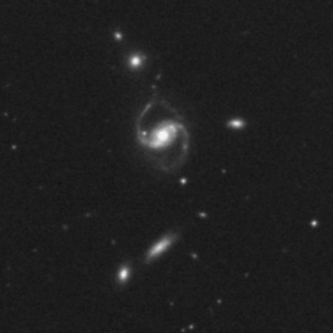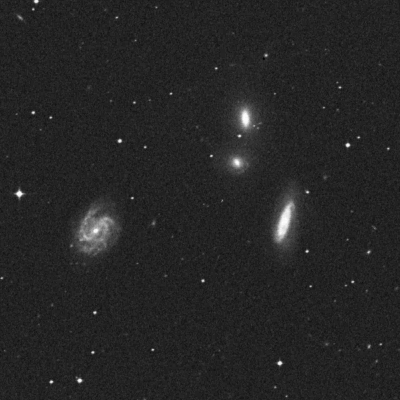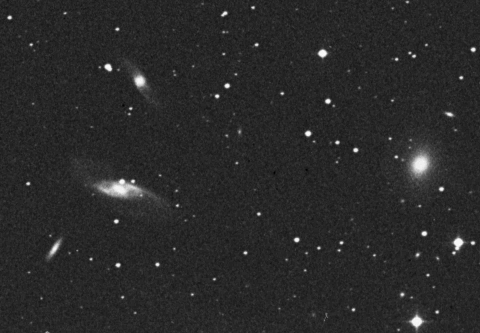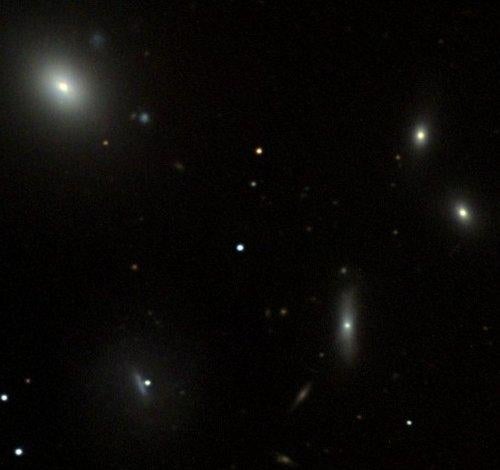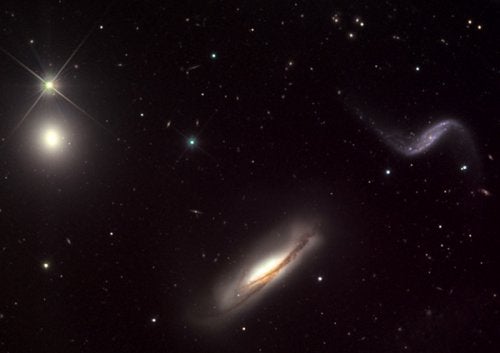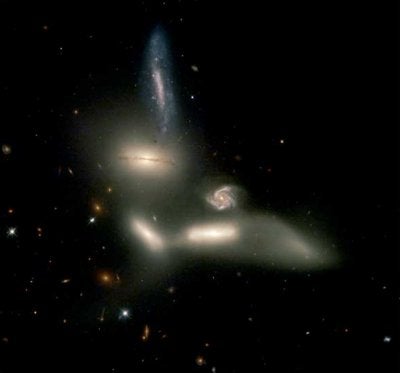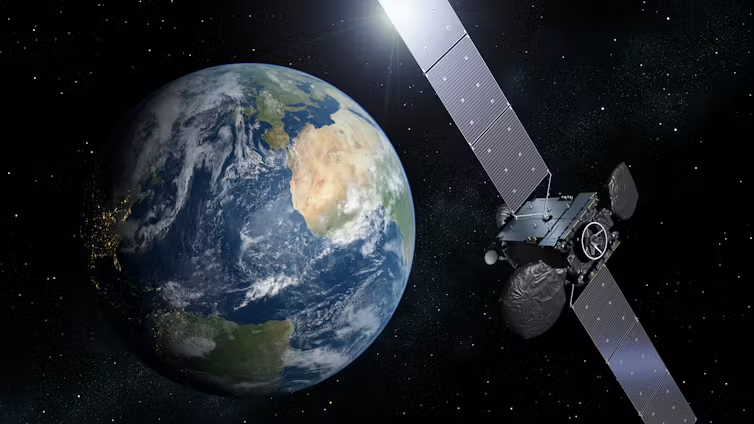The first known compact group of galaxies was discovered by French astronomer E.M. Stephan in 1877. Now called Stephan’s Quintet, the well-known assemblage in Pegasus contains four interacting galaxies and one closer galaxy which happens to appear along nearly the same line of sight.
Believing that such galactic gangs could teach astronomers valuable lessons about the history of the universe, University of British Columbia astronomer Paul Hickson decided to search for and catalog more groups like Stephan’s Quintet. After examining exposures from the Palomar Sky Survey, Hickson published a collection of 100 close-knit galaxy groups in 1994. Stephan’s Quintet became #92 in Hickson’s Atlas of Compact Groups of Galaxies.
For your viewing enjoyment, we’ve gathered a small sampling of the galaxy groups in Hickson’s collection. Be sure to click on each thumbnail image to view a larger version.
HCG4
Five galaxies belong to Hickson Compact Group 4, but only three of these are gravitationally connected. The galaxy in the center is a nearly face-on spiral with long, thin arms. DSS / STScI / AURA
All four of the galaxies in Hickson Compact Group 7 are gravitationally connected. The largest member (at left) is NGC 201. HCG7 lies in Cetus the Whale.DSS / STScI / AURA
This loose group of four galaxies in Andromedy is known as Hickson Compact Group 10. The brightest spiral (at left) has a distinct bar and is called NGC 536. DSS / STScI / AURA
The brightest member of Hickson Compact Group 22 is a large elliptical galaxy (upper left) called NGC 1199. It is accompanied by two spiral galaxies. A pair of elliptical galaxies (at right) lies much farther away. HCG22 lies in the constellation Eridanus the River. Steve Johnson and Tina Monaghan / Adam Block / NOAO / AURA / NSF
Four galaxies belong to Hickson Compact Group 44, but only three are shown here. (The fourth, a spiral galaxy, lies off the lower right edge of this image.) Also known as Arp 316, the group is thought to lie about 60 million light-years away. The elliptical galaxy at left is called NGC 3193. The other two are spirals; NGC 3190 appears near the bottom and NGC 3187 is to the right. HCG44 lies in the constellation Leo. Adam Block / AURA / NOAO / NSF
Commonly called Seyfert’s Sextet, Hickson Compact Group 79 lies in the constellation Sextans and contains six galaxies, although only four are gravitationally bound. Also known as NGC 6027, this galactic crowd is the most compact group in Hickson’s catalogue. NASA / J. English (U. Manitoba), et al.

